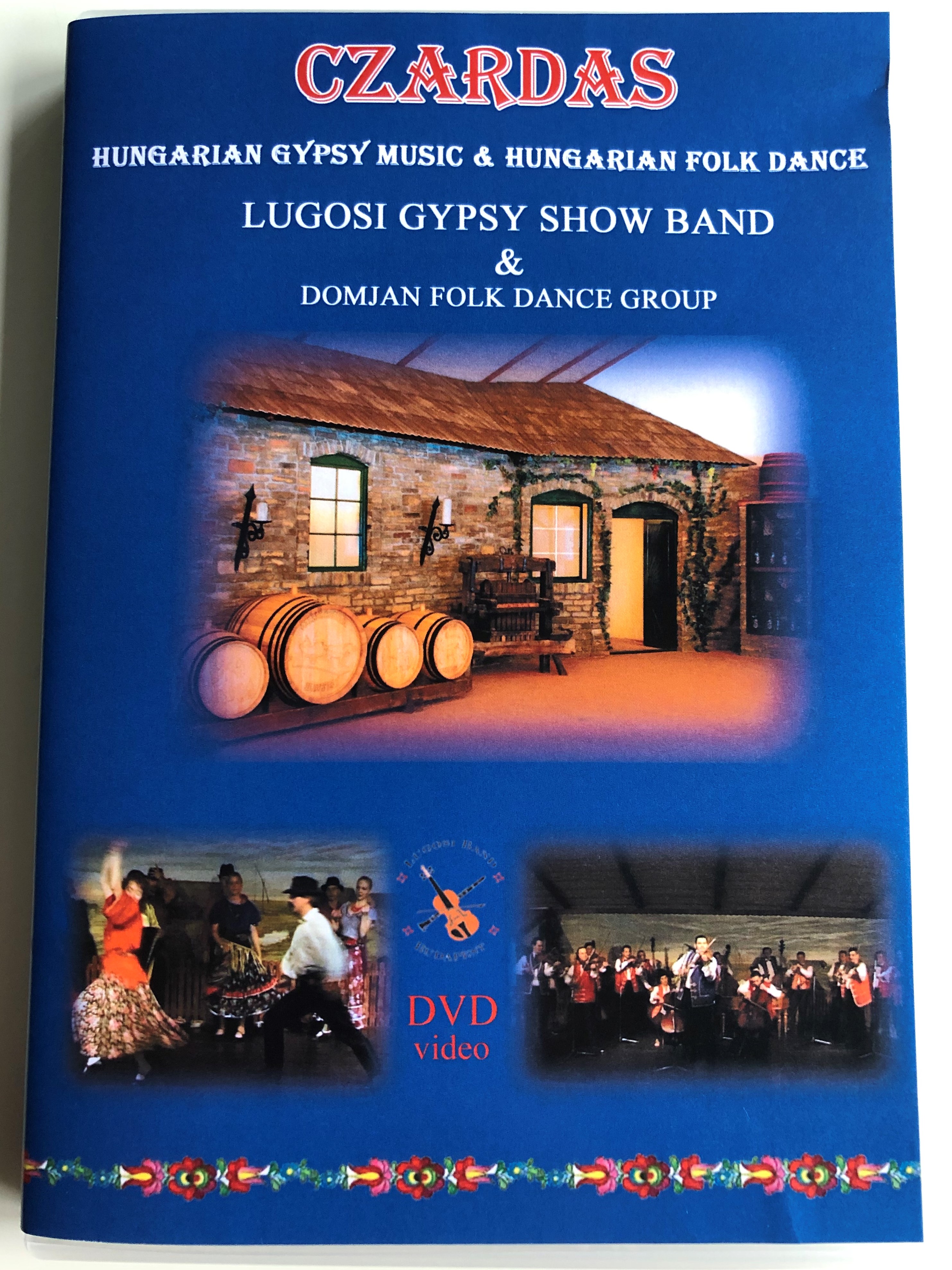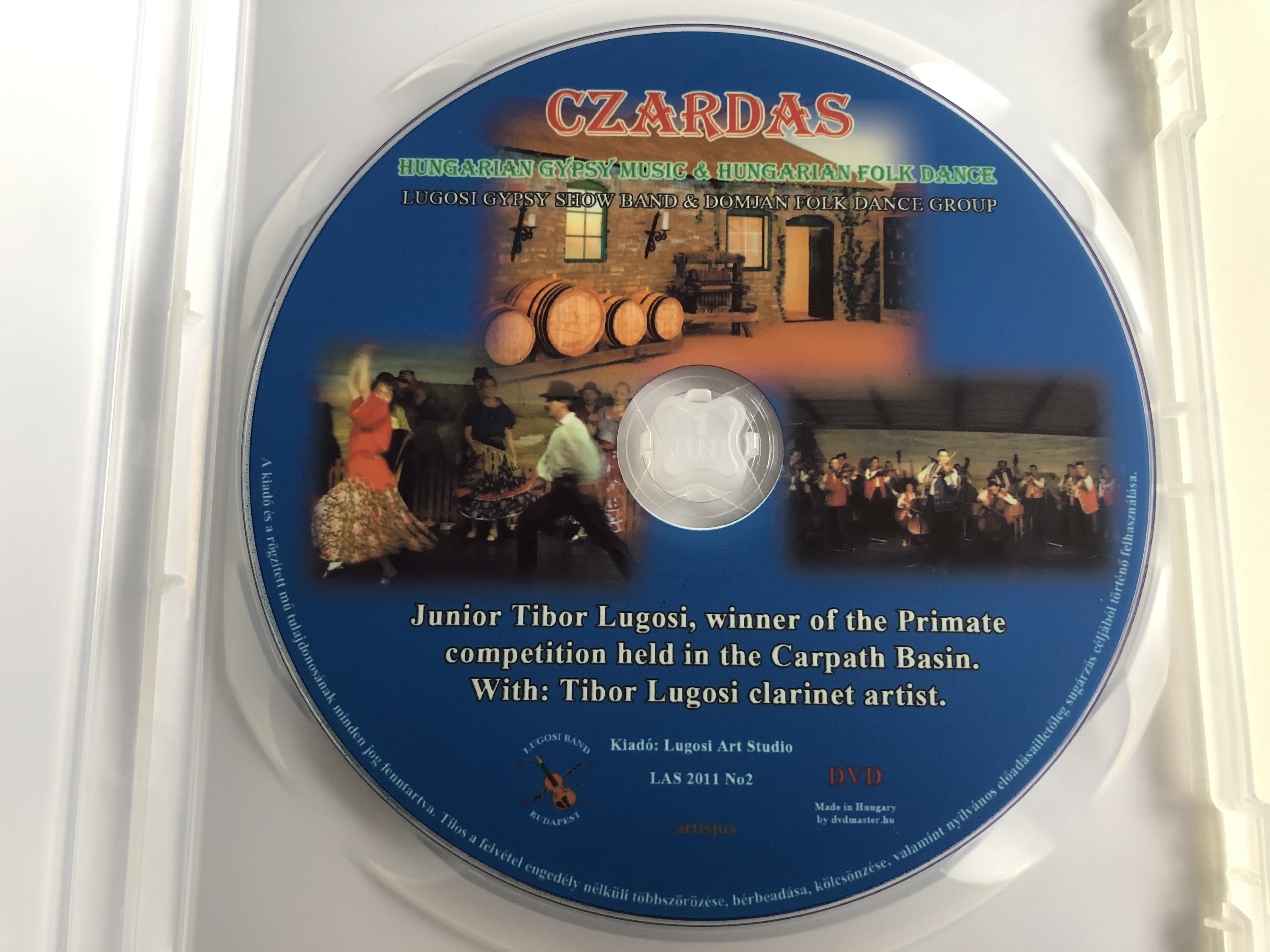Description
Czardas - Csárdás DVD Hungarian Gypsy Music & Hungarian Folk Dance / Lugosi Gypsy Show Band & Domjan Folk Dance Group / Lugosi Art Studio LAS 2011
UPC 5999881068962
MADE IN HUNGARY
REGION 2 PAL DVD
English Summary:
The Lugosi Gipsy Band
The Lugosi Gipsy Band is one of the most famous bands in Hungary. The orchestra's founder and leader is Tibor Lugosi, who is a high qualified clarinettist and tárogató (special Hungarian instrument) artist and he is soloist of the Hungarian Radio and the Hungarian National Television too. All members in the band are highly educated, and they are excellent performers! Their repertory is very colourful and plentiful, several kind of neat music choice. Apart from the traditional Hungarian and Gipsy folk music, they play pieces of Brahms, Kodaly, Bartok and Liszt. The programme of the orchestra includes world-famous classical compositions too. To diversify their programme, they also play operetta, musical and background music productions. Their play reserved stand up ovation several times. Celebrities who have been to Hungary, listened to Lugosi Orchestra’s music with pleasure.
PROGRAM / Tracklist:
1 Johannes Brahms: Hungarian Dance No. 5
2 Ferenc Erkel: Palotas Dance / from the opera Hunyadi Laszlo
3 Vittorio Monti: Czardas
4 Shepherd's Dance /Pásztor tánc/
5 Grigoras Dinicu: Ciocarlia - The Lark /A pacsirta/
6 Sarkozi glass dance /Sárközi üveges tánc/
7 Renz: Cirkusz polka / cimbalom szóló
8. Hungarian Gypsy Dance / Magyarországi cigány táncok
"Csardas”
Fueled by the fiery music of gypsy violins, the Csardas also captivated and inspired great romantic composers like Brahms and Liszt, who made it famous throughout the musical world.
In Hungary the Csardas rose to become the symbolic expression of the "national" soul. That's a triumphant procession for a relative upstart among central Europe's dances. After all, the Csardas is hardly 200 years old. But while it's certain that the dance didn't ride into Central Europe with the conquering Magvar horsemen a thousand years ago, it's also safe to say that it has real roots that spread deep and wide into older, perhaps ancient layers of music and dance. The Csardas is an improvised dance. The man leads his partner as he would in most "modern" couple dances. However, unlike the polka and the waltz - two dance fashions born around the same time - the Csardas has a far richer repertoire of steps for the dancers to choose from. More importantly, the Csardas maintains a tradition of individual and couple dancing that goes back to much older dances throughout Europe.
One of the striking characteristics of the Csardas is that it has a slow and a fast part. And in the fast Csardas, the partners often separate to dance apart, teasing each other in a romantic dance-relationship that brings possibilities for playfulness and enticement to the Csardas. The man's part in this love play often changes into a virtuoso performance that can include spectacular boot-slapping sequences. These male solos are not merely about showing off; they are the remnants of much older men's dance traditions re-interpreted in the Csardas. The most ancient of these men's dances were victory dances done with weapons, often swords. Gypsy traditions in Northeastern Hungary have kept alive a curiously exciting bridge between the weapons dance and couple dancing: a man and woman dance together, never touching, the man twirling a stick as he would in a fight; the woman defenseless, places complete trust in her partner, the dance itself her only weapon.
Although the Csardas is known and loved in all areas of the Carpathian Basin, the local variants are often surprisingly different. In Transylvania, for example, mountainous terrain and bad roads still combine to keep villages isolated. The result is that the people of one village may not recognize the Csardas done by other villagers a mere dozen miles away. The Csardas is a complex, multi-layered, living tradition that's still guaranteed to set toes tapping and hearts beating faster.






























